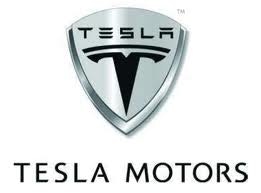Tesla Motors Inc (NASDAQ:TSLA) is off to a tremendous start in 2013. The company reported its first profit in its history last quarter and did so in dramatic fashion, destroying analyst estimates in terms of both vehicles sold and earnings per share. Additionally, a string of positive news ranging from the early repayment of a U.S. government loan to the crowning of the Tesla Model S as Motor Trend’s 2013 Car of the Year has generated significant excitement around the company and the stock.
Add in a visionary CEO with ambitious plans to roll out a network of superchargers that will make fast charging a reality as well as allow for coast-to-coast travels in a Model S, and this stock chart for Tesla Motors Inc (NASDAQ:TSLA) so far in 2013 begins to make a little bit of sense:
TSLA data by YCharts
While the company’s stock has settled a bit from the high of $114 reached in May, Tesla Motors Inc (NASDAQ:TSLA)’s current market capitalization of over $11 billion presents an interesting quandary for current and prospective investors in the company. Does the company have the growth potential to warrant a premium valuation above its peers such as the one awarded to Amazon.com, Inc. (NASDAQ:AMZN), or should Tesla Motors Inc (NASDAQ:TSLA) be thought of using the same metrics as other car companies such as Ford Motor Company (NYSE:F) or General Motors Company (NYSE:GM) ?
Growth certainly deserves a premium
A quick look at Tesla Motors Inc (NASDAQ:TSLA)’s past, present, and future shows tremendous growth. During the first quarter, Tesla reported delivery of almost 5,000 vehicles. While this total blew past analyst expectations, CEO Elon Musk recently laid out a plan for the company to reach an annualized run rate of 25,000 vehicles by the end of the year and a long term projection of 500,000 vehicles per year.
That’s some serious growth, and it comes from a number of drivers that the company hopes to exploit simultaneously. First, the company has a very small geographic footprint at the moment, which is expected to expand dramatically both within the United States and internationally. Second, the company has announced its plans to enter the SUV market in 2014 with the Model X and has already hinted at future releases of vehicles at lower price points. Third, the company simply does business differently than other automakers; Tesla owns its own sales channels and provides access to superchargers at no charge to existing Tesla owners. This very different approach has resonated with customers and is expected to continue to result in market share gains.
In combination, management expects new vehicles and new markets to help propel the company to 500,000 vehicles a year. Analysts expect that the company will deliver uncommon revenue growth for a car company, with revenue expected to grow by 358% and 27% in 2013 and 2014, respectively.
A dose of reality
Tesla’s growth trajectory is certainly worth a premium, but the big question is: how much? Here’s a look comparing Tesla’s fundamentals to its competitors:
| TSLA | F | GM | TM | HMC | |
|---|---|---|---|---|---|
| CAPS rating (out of five stars) | 1 star | 4 stars | 2 stars | 3 stars | 5 stars |
| Share price | $97.76 | $15.68 | $33.89 | $117.55 | $37.57 |
| Market capitalization | $11.3 | $61.6 | $46.6 | $186.2 | $67.6 |
| TTM revenue (in billions) | $0.9 | $137.6 | $151.4 | $280.4 | $125.5 |
| TTM price to sales ratio | 12.83 | 0.45 | 0.31 | 0.68 | 0.56 |
| 2013 estimated revenue growth | 358% | 7.5% | 2.1% | -17.3% | -2.9% |
| 2014 estimated revenue growth | 27.0% | 5.2% | 6.6% | 6.1% | 18.6% |
| TTM price to earnings ratio | N/A | 10.63 | 11.62 | 15.23 | 14.51 |
| Forward price to earnings ratio | 94.00 | 9.39 | 7.72 | 11.39 | 12.96 |
| Five year expected earnings growth | 32.9% | 11.9% | 15.5% | 44.9% | 28.8% |
| Dividend yield | 0.0% | 2.6% | 0.0% | 1.2% | 2.2% |
| Source: Motley Fool CAPS and Yahoo! Finance – 6/2/13 | |||||
Price to sales is probably the most comparable measure among the automakers in the table above. While the peer group of major car companies has price to sales ratios in the range of 0.50, Tesla’s P/S ratio of 12.83 certainly stands out. None of the other companies have the same growth opportunity as Tesla or as revolutionary a product, but trading at a premium of 25 times the peer group is certain worth taking a moment to consider.
On the bottom line, most car manufacturers have demonstrated regular and consistent profitability; in contrast, Tesla has reported just one quarterly profit in the company’s history. While Ford Motor Company (NYSE:F) and Honda Motor Co Ltd (ADR) (NYSE:HMC) have used consistent profits to return over 2% per year to shareholders through dividends, Tesla still generates negative free cash flow as it continues to invest in expansion opportunities.
Looking at this peer group, the leader of the pack from a valuation perspective seems to be General Motors Company (NYSE:GM), which boasts the lowest P/S ratio and forward P/E. However, the company’s well publicized plunge into bankruptcy remains in the minds of investors. Until the company’s struggles are further in the rear view mirror, expect it to continue to trade at a discount.
Meanwhile, Ford’s strength in North America is offsetting weakness elsewhere, and new models continue to be well received by consumers. The company currently trades at an attractive P/S ratio of 0.45 and a forward P/E of just 9. Add in the 2.60% dividend yield, and there’s a lot to like even after Ford’s recent share price gains.
The short and long-term conclusions
Looking at the short-term, it is pretty hard to justify Tesla’s current share price even when factoring in the growth opportunity and recent streak of positive developments. Quite simply, there will be a chance to buy shares of Tesla at a lower price than Friday’s closing price of above $97.
With that said, the long term investment thesis is very much intact, and thus far, all evidence points towards Tesla exceeding all initial expectations. As a result, I firmly believe that the share price a decade from now will be well above current levels. To that end, I personally plan to keep a small portion (just over 2%) of my portfolio invested in Tesla for the same reasons that I own shares of Amazon.com despite all traditional valuation metrics indicating that the company is wildly overvalued. Similarly, I will maintain my CAPScall that Tesla will continue to beat the S&P 500 over the long-term.
It is understandable for someone to question why I advocate holding shares of Tesla just a few sentences after saying that the price will likely decline in the short-term. The answer to this question is a matter of investment perspective. I’m not interested in trying to time the market by selling shares of Tesla today with the plan of buying them back at a lower price, mostly because market timing is very imprecise and quite easy to screw up!
Just like Amazon.com, Inc. (NASDAQ:AMZN) and other high-multiple stocks, there will be plenty of volatility along the way; this ties into the high likelihood that there will be a better time to buy shares of Tesla in the near future. However, if Musk’s long-term vision becomes reality, there is plenty of room for Tesla to grow into a market capitalization similar to Ford, GM, or the other major auto manufacturers.
For investors who hold onto shares as Tesla grows, this still leaves the potential for multi-bagger returns even from today’s prices. For that reason, accumulating shares of Tesla in the coming months makes a lot of sense for investors that plan to hold the shares for five years or more.
Brian Shaw owns shares of Amazon.com, Ford, and Tesla Motors. The Motley Fool recommends Amazon.com, Ford, General Motors, and Tesla Motors . The Motley Fool owns shares of Amazon.com, Ford, and Tesla Motors.
The article Time to Tap the Breaks on Tesla? originally appeared on Fool.com and is written by Brian Shaw.
Brian is a member of The Motley Fool Blog Network — entries represent the personal opinion of the blogger and are not formally edited.
Copyright © 1995 – 2013 The Motley Fool, LLC. All rights reserved. The Motley Fool has a disclosure policy.






